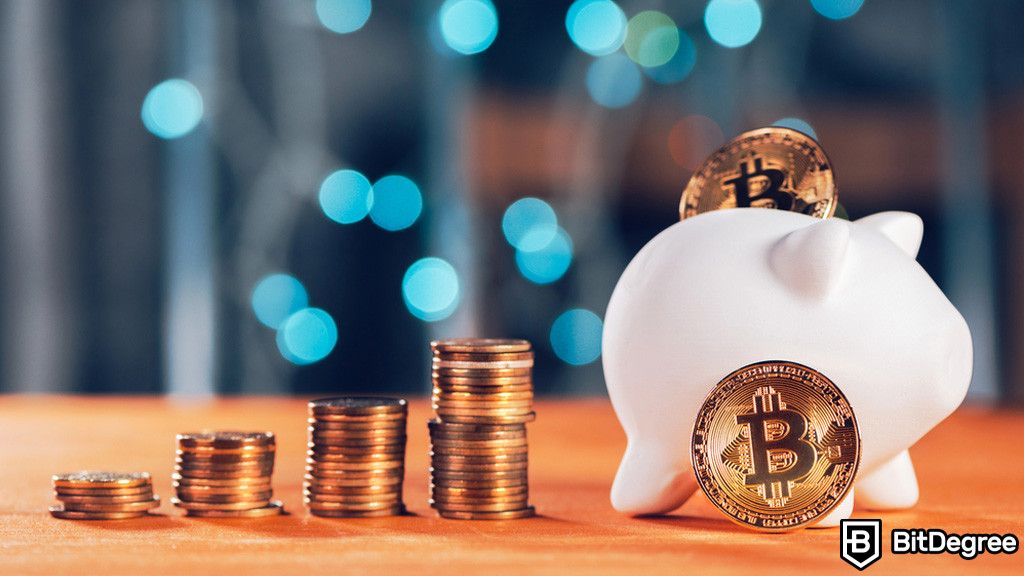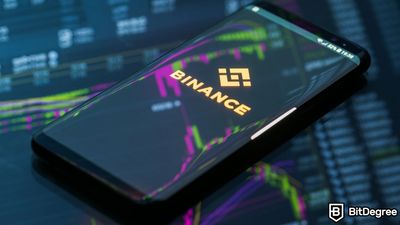Key Takeaways
- Blockchain in banking significantly enhances security and reduces fraud through its transparent and immutable ledger system.
- The use of smart contracts and improved data management in blockchain banks increases efficiency and accessibility, transforming financial transactions.
- By automating compliance processes and ensuring accurate reporting, blockchain technology in banking strengthens regulatory adherence and reduces administrative burdens.
Stop overpaying - start transferring money with Ogvio. Sign up, invite friends & grab Rewards now! 🎁
Feeling like your bank transactions take forever and cost a small fortune? You're not alone. The traditional banking system can be slow, clunky, and full of hidden fees. But what if there was a way to make things faster, cheaper, and more secure? Enter blockchain in banking!
This revolutionary technology is making waves across industries, and banking is no exception. By using blockchain technology in banking, institutions could potentially streamline processes, reduce costs, and even improve security. Even major crypto players like Binance, Kraken, and Bybit are exploring how blockchain technology in banking can streamline processes, reduce costs, and improve security for institutions. But is it all just hype, or are there real benefits to be had?
In this article, I'm diving deep into the world of blockchain in banks. We'll explore 10 potential benefits of using blockchain technology in banking, from faster cross-border payments to more secure identity verification. Plus, I'll share some real-world examples of how blockchain is already being used in the banking sector. So, buckle up and get ready to see how blockchain in banking could transform the way you manage your money.

Did you know?
Subscribe - We publish new crypto explainer videos every week!
What is Shiba Inu Coin? (Explained with Animations)


Table of Contents
- 1. Blockchain in Banking: A Brief Intro
- 2. 10 Benefits of Using Blockchain in Banking
- 2.1. Improved Security
- 2.2. Reduced Fraud
- 2.3. Faster Transactions
- 2.4. Lower Transaction Costs
- 2.5. Enhanced Transparency
- 2.6. Improved Efficiency in Back-End Operations
- 2.7. Better Data Management
- 2.8. Increased Accessibility
- 2.9. Smart Contracts
- 2.10. Improved Regulatory Compliance
- 3. Real-Life Examples of Blockchain in Banking
- 3.1. RippleNet
- 3.2. R3 Consortium
- 3.3. JPMorgan Chase
- 4. Conclusions
Blockchain in Banking: A Brief Intro
Ever wondered how securely your money gets zipped around the banking system when you make a payment? It involves a whole network of computers constantly checking and rechecking information. Well, blockchain technology in banking is like a brand-new filing system for all that financial data.
Latest Deal Active Right Now:Imagine a giant, digital spreadsheet that everyone on the network can see. Every transaction, from your morning coffee purchase to a massive international trade, gets recorded on this spreadsheet in a block. Each block is then linked to the one before it, creating a chain – hence the name "blockchain". But here's the cool part: this chain is super secure. Once a block is added, it's nearly impossible to change it without everyone on the network noticing.
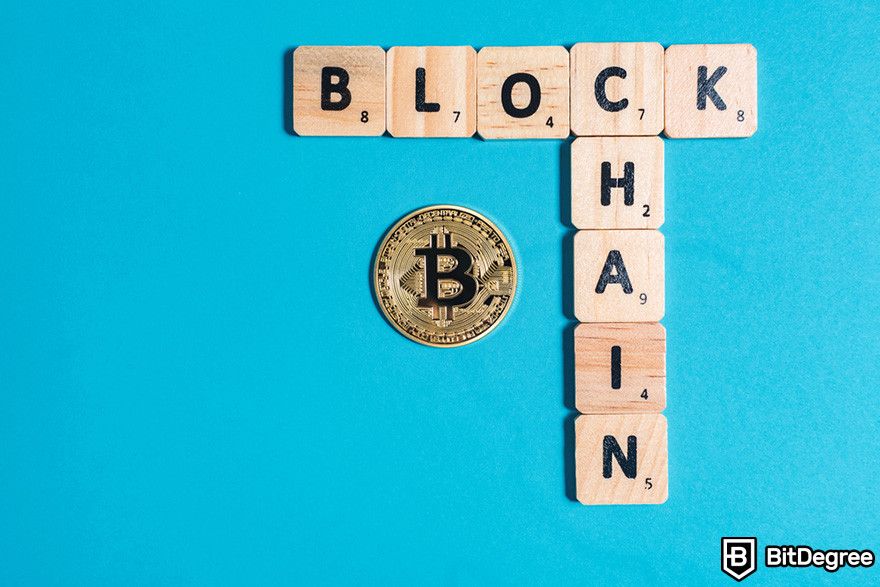
So, how do blockchain and banking connect? By using this secure chain of information, blockchain in banking can streamline a lot of processes. It can make transactions faster, cheaper, and more transparent. Think of it as a way to cut out the middleman and create a more efficient system for everyone involved.
This is just a quick intro, of course. Throughout this article, we'll dive deeper into the top 10 benefits of using blockchain in banking. We'll explore how this technology can revolutionize the way banks operate and how it might even change how you manage your money.
10 Benefits of Using Blockchain in Banking
In no particular order, here are the 10 biggest benefits of using blockchain technology in banking.
Improved Security
When it comes to security, blockchain technology is like having a digital fortress protecting sensitive information. The decentralized nature of blockchain means that data isn't stored in one central location. Instead, it's distributed across multiple nodes, making it extremely difficult for hackers to target and compromise. This is a game-changer for banking, where security breaches can have catastrophic consequences.
Blockchain in banking ensures that every transaction is encrypted and linked to the previous one, creating a secure chain that’s nearly impossible to alter. This process, known as cryptographic hashing, means that once a transaction is recorded, it cannot be changed without altering all subsequent blocks and gaining consensus from the network. This provides a level of security that traditional banking systems simply can't match.
Now, you might be wondering how exactly blockchain enhances security in banking transactions. Well, let's dive a bit deeper. Each transaction on a blockchain is verified by a network of nodes through a consensus mechanism. This means that before a transaction is added to the blockchain, it must be agreed upon by the majority of the network. This consensus process eliminates the risk of fraudulent transactions slipping through the cracks.

For example, in a traditional banking system, a single database breach can expose thousands of accounts to fraud. However, with the use of blockchain in banking, the decentralized nature of the ledger makes it exponentially harder for bad actors to access and manipulate data. This dramatically reduces the risk of fraud and unauthorized transactions.
To give you an idea of the real-world impact, a study by Raj et al. (2023) found that blockchain has a distinctive potential for storing transaction records to avoid money laundering which helps in avoiding transaction breaches[1]. This study highlights how blockchain can be a robust solution for the security challenges faced by the banking industry.
The transparency and immutability provided by blockchain and banking offer a security framework that’s not just theoretical but practical and proven. So, when we talk about the benefits of blockchain in banking, improved security is undeniably at the forefront. This enhanced security isn't just about protecting banks; it's about safeguarding customers and ensuring trust in the financial system. By leveraging blockchain technology in banking, we are building a safer, more secure future for financial transactions.
Reduced Fraud
One of the standout advantages of using blockchain in banking is its ability to reduce fraud significantly. After discussing the security enhancements blockchain offers, it's clear that the technology's transparency and immutability are game-changers in combating fraudulent activities.
Blockchain's transparency means that every transaction is visible to all participants in the network. This visibility creates a system where all actions are recorded and cannot be easily hidden or altered. In the context of banking, this transparency ensures that all transactions are out in the open, making it incredibly difficult for fraudsters to manipulate records without being detected.
For example, consider how traditional banking systems operate. Typically, transactions are recorded in a centralized database, which can be vulnerable to hacking and unauthorized changes. However, with blockchain in banking, every transaction is recorded across a distributed ledger, meaning any attempt to alter a transaction would require altering it on every single node in the network—a near-impossible feat. This inherent characteristic of blockchain security could significantly reduce opportunities for fraudulent activities.

Moreover, blockchain in banks also means that any fraudulent attempt would be instantly noticeable, as the system provides real-time tracking and updating of transactions. This real-time monitoring capability is a powerful tool in the fight against fraud, allowing banks to detect and respond to suspicious activities swiftly. Some of the automation capabilities from certain blockchain technologies can also reduce the risk of human error and intentional manipulation[2].
The use of blockchain in banking is proving to be a formidable weapon against fraud. By leveraging blockchain's transparency, decentralized verification, and real-time tracking, banks can create a more secure environment for financial transactions, protecting both the institution and its customers from fraudulent activities. As blockchain banking continues to evolve, we can expect even greater reductions in fraud and enhanced trust in the financial system.
Faster Transactions
Now that we've covered how blockchain in banking enhances security and reduces fraud, let's dive into another significant advantage: faster transactions. Speed is crucial in today's fast-paced financial world, and blockchain technology in banking is revolutionizing how quickly transactions are processed.
Traditionally, banking transactions can be slow, especially when dealing with international transfers. The conventional banking system involves multiple intermediaries, each adding its own processing time and potential delays. This can be frustrating for both banks and their customers, who often have to wait days for transactions to clear. However, the use of blockchain in banking changes the game entirely.

Blockchain technology enables peer-to-peer transactions without the need for intermediaries. When you initiate a transaction using blockchain, it is verified and recorded directly on the distributed ledger, bypassing the need for multiple middlemen. This streamlined process drastically reduces the time it takes for transactions to be completed. In some cases, what used to take days can now be done in minutes or even seconds.
For example, international money transfers are notoriously slow and expensive due to the various banks and clearing houses involved. With blockchain banking, these transfers become much more efficient. By using blockchain, banks can process cross-border payments almost instantly, as the transaction details are simultaneously updated across all nodes in the network.
The use of blockchain in banking is not just about keeping up with technological advancements; it’s about providing a better, faster service for customers. As banks continue to adopt and integrate blockchain technology, the days of waiting for transactions to clear will soon be a thing of the past. Blockchain banking promises a future where financial transactions are swift, secure, and seamless, making it a win-win for both banks and their customers.
Lower Transaction Costs
Building on the benefits of faster transactions, another significant advantage of blockchain in banking is the potential for lower transaction costs. This cost efficiency is a key driver behind the growing adoption of blockchain technology in the financial sector.
One of the primary reasons why traditional banking transactions are costly is the involvement of multiple intermediaries. Each party involved in processing a transaction—such as payment processors, clearing houses, and correspondent banks—adds their own fees, driving up the overall cost. These fees can be particularly burdensome for international transactions, where currency exchanges and cross-border regulations come into play.

Blockchain in banking streamlines this process by enabling peer-to-peer transactions that eliminate the need for intermediaries. When transactions are processed directly on a blockchain, there’s no need to pay multiple parties to verify and settle the transaction. This reduction in intermediaries translates to significant cost savings for both banks and their customers.
In addition to international transfers, blockchain banking can also reduce costs in other areas, such as loan processing, trade finance, and securities settlement. By automating processes and reducing manual intervention, blockchain technology lowers administrative costs and speeds up transaction times.
The use of blockchain in banking isn’t just about faster and more secure transactions; it’s also about making banking more affordable. By cutting out intermediaries, automating processes, and providing transparency, blockchain technology in banking offers a cost-effective solution that benefits both financial institutions and their customers. As banks continue to adopt and integrate blockchain technology, the reduction in transaction costs will play a crucial role in shaping the future of the financial industry.

Did you know?
Subscribe - We publish new crypto explainer videos every week!
What is Defi 2.0? (Explained with Animations)


Enhanced Transparency
Following the discussion on cost savings, another compelling advantage of blockchain in banking is the enhanced transparency it brings. This transparency is not just a buzzword; it fundamentally transforms how transactions are conducted and monitored in the financial sector.
Transparency in traditional banking systems is often limited due to centralized databases and complex layers of intermediaries. This lack of visibility can lead to issues like errors, fraud, and a general lack of trust among customers and regulatory bodies. However, blockchain in banking turns this on its head by providing a clear, immutable record of all transactions.

Each transaction on a blockchain is recorded on a distributed ledger that is accessible to all participants in the network. This means that every transaction is open to scrutiny, making it virtually impossible to hide or manipulate data without being detected. For banking, this level of transparency is revolutionary. It ensures that all parties involved have a clear and accurate view of each transaction, fostering greater trust and accountability.
For example, consider how blockchain in banks can improve the transparency of loan processing. Traditionally, loan approvals and disbursements involve multiple stages and several intermediaries, each adding its own layer of complexity. With blockchain banking, every step of the loan process can be recorded on the blockchain, providing a transparent and tamper-proof record. This not only speeds up the process but also ensures that all actions are visible and accountable.
Additionally, blockchain solves the problem of trust in a central authority by maintaining records and transactions of information resources across a distributed network[3], rather than in a centralized control system. The transparency offered by blockchain is also beneficial for building customer trust.

When customers know that their transactions are handled transparently and securely, their confidence in the banking system increases. This trust is crucial for banks to maintain and grow their customer base in an increasingly competitive market.
In short, the use of blockchain in banking enhances transparency in ways that traditional systems cannot match. By providing an open and immutable record of transactions, blockchain in banks fosters trust, accountability, and compliance, paving the way for a more transparent and reliable financial system.
Improved Efficiency in Back-End Operations
Building on the theme of enhanced transparency, another crucial benefit of blockchain in banking is the improved efficiency it brings to back-end operations. While the customer-facing benefits of blockchain banking are often highlighted, the behind-the-scenes improvements are just as impactful.
In traditional banking systems, back-end operations can be incredibly complex and time-consuming. Processes like settlement, clearing, and reconciliation involve multiple steps and numerous intermediaries, each adding its own layer of paperwork and manual intervention. This not only slows down operations but also increases the risk of errors and discrepancies.
Blockchain in banking streamlines these back-end processes by automating and decentralizing them. With blockchain, transactions are recorded in a shared ledger that is updated in real time. This means that all parties involved in a transaction have immediate access to the same information, eliminating the need for multiple reconciliations. For banks, this translates to faster processing times and reduced operational costs.

For instance, in a traditional banking system, reconciling transactions at the end of each day can be a tedious task. It involves matching records from different systems, identifying discrepancies, and manually correcting errors. However, with a blockchain bank, the reconciliation process is automated. Since every transaction is recorded on a single, immutable ledger, there’s no need for manual matching. This not only speeds up the process but also reduces the likelihood of errors.
A real-world example of improved efficiency through blockchain in banks is the settlement of securities. Traditionally, settling a securities transaction can take several days, involving various intermediaries and clearing houses. Blockchain technology can reduce this settlement time to a matter of minutes by allowing direct peer-to-peer transactions. This efficiency not only speeds up the process but also frees up capital that would otherwise be tied up during the settlement period.
Better Data Management
Following the discussion on improved efficiency in back-end operations, another significant benefit of blockchain in banking is better data management. This advantage is closely related to operational efficiency, as effective data management underpins many of the efficiencies that blockchain brings to the table.
In traditional banking systems, data management can be a cumbersome process. Banks have to handle vast amounts of data from various sources, and this data often needs to be reconciled, verified, and stored securely. The complexity of these tasks can lead to inefficiencies, errors, and increased costs. However, blockchain in banking offers a transformative approach to data management.
Blockchain technology provides a decentralized and immutable ledger where all transaction data is recorded. This means that data is not only stored securely but also made accessible in a transparent and efficient manner. For banks, this means having a single source of truth that all parties can rely on, reducing the need for multiple data reconciliation processes.

For example, consider how blockchain in banks can streamline the management of customer records. In traditional systems, customer data is often siloed across different departments and systems, leading to fragmentation and redundancy. A blockchain bank, on the other hand, can store customer data on a unified ledger. This ensures that all departments have access to the same up-to-date information, enhancing coordination and reducing the risk of errors.
The transparency and immutability of blockchain also mean that data integrity is maintained at all times. Since every transaction is recorded and cannot be altered, the accuracy and reliability of the data are significantly improved. This is particularly beneficial for regulatory compliance, where accurate and up-to-date data is crucial.
A study by Zheng et al. (2017) highlights the impact of blockchain on data management in the financial sector. The research found that blockchain technology enhances data integrity, security, and accessibility[4], making it an ideal solution for the complex data management needs of banks. Moreover, better data management through blockchain and banking also means improved data security.
With data breaches becoming increasingly common, the security features of blockchain—such as cryptographic hashing and decentralized storage—provide robust protection against unauthorized access and tampering.

By providing a secure, transparent, and immutable ledger, blockchain in banks ensures that data is accurately recorded, easily accessible, and well-protected. This, in turn, supports better decision-making, regulatory compliance, and overall operational efficiency. As blockchain technology continues to evolve, its impact on data management in the banking sector will only become more pronounced.
Increased Accessibility
Moving forward from better data management, another significant benefit of blockchain in banking is increased accessibility. Blockchain technology has the potential to democratize access to financial services, making them more inclusive and available to a broader population.
One of the key barriers to accessing traditional banking services is geographical limitations and infrastructure constraints. Many people around the world, especially in underserved or remote areas, do not have easy access to physical bank branches. However, blockchain in banking offers a decentralized alternative that can be accessed from anywhere with an internet connection.
Blockchain technology allows for the creation of blockchain banks or digital wallets that can store and manage cryptocurrencies like Bitcoin, Ethereum, and others. Platforms like Binance, Kraken, and Bybit provide users with the ability to trade, invest, and store digital assets securely. These "blockchain banks" operate 24/7, without the need for physical branches, making financial services accessible to anyone with a smartphone or computer.
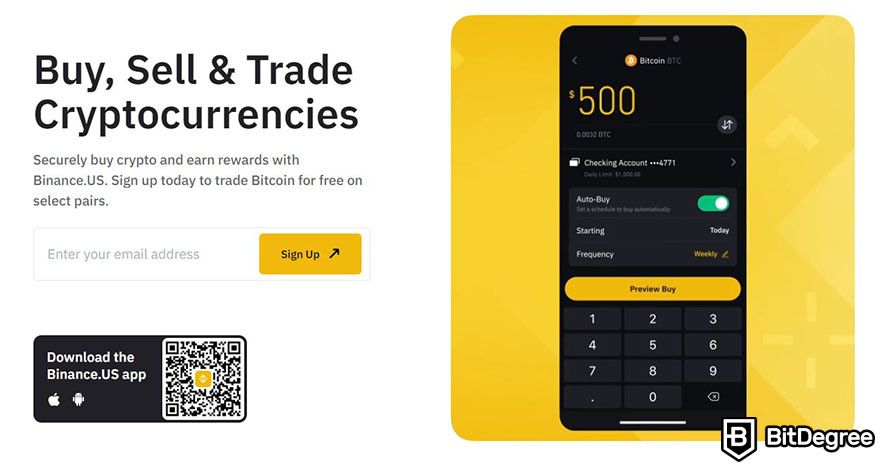
For example, consider someone in a rural area who wants to save or invest money but lacks access to traditional banking services. With blockchain and banking platforms like Binance, they can create a crypto wallet and start participating in financial activities instantly. This level of accessibility can empower individuals who are otherwise excluded from the formal financial system.
Moreover, blockchain in banks enhances accessibility by reducing the barriers to entry for financial services. Traditional banking systems often require extensive documentation, credit history, and physical presence to open an account or access certain services. Blockchain technology, on the other hand, can facilitate faster and more inclusive onboarding processes, allowing more people to participate in the financial ecosystem.
The accessibility provided by blockchain and banking extends beyond geographical boundaries. It also includes people who may face barriers due to disabilities or other limitations. Cryptocurrency wallets and exchanges offer a user-friendly interface that can be accessed and managed independently, promoting financial independence and inclusion.
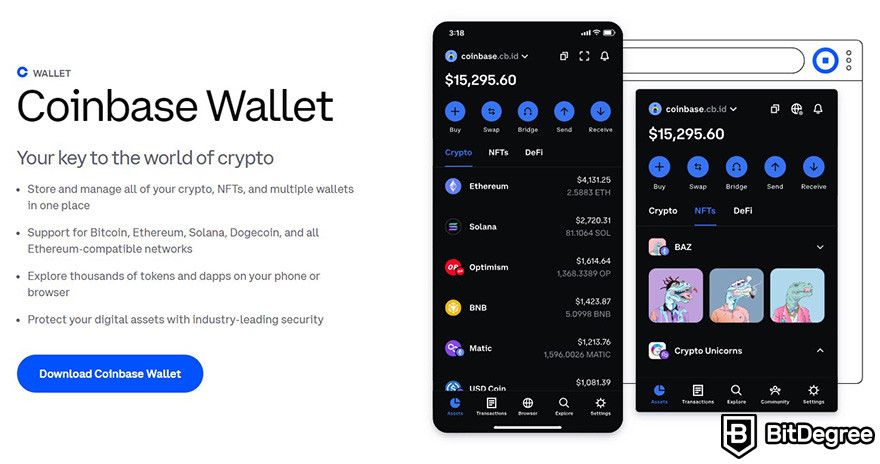
Blockchain in banking is not just about improving efficiency and data management; it's also about making financial services more accessible to everyone. By leveraging blockchain technology, blockchain banks can overcome geographical limitations, reduce barriers to entry, and empower individuals worldwide to participate in the global economy. As blockchain continues to evolve, its potential to increase accessibility and inclusivity in banking will only continue to grow.
Smart Contracts
Smart contracts are self-executing contracts with the terms directly written into code. They automate and enforce the terms of an agreement without the need for intermediaries, offering numerous advantages in banking and financial transactions.
In traditional banking, executing contracts and agreements often involve multiple parties, paperwork, and legal processes, which can be time-consuming and prone to errors. Smart contracts, enabled by blockchain technology, streamline this process by automating contract execution based on predefined conditions.
For example, imagine a mortgage agreement handled through a blockchain bank. Using a smart contract, the terms of the mortgage—such as payment schedules and conditions, can be encoded into the blockchain. Once the conditions are met, such as timely payments and verification of property ownership, the smart contract automatically executes the next steps, such as transferring ownership or releasing funds.
Blockchain in banking also extends the use of smart contracts beyond simple agreements to complex financial instruments. For instance, derivatives trading and insurance claims processing can benefit from smart contracts that automatically execute payments based on predefined triggers and conditions.

The transparency and security features of blockchain enhance the reliability of smart contracts. Since smart contracts are recorded on a decentralized ledger and cannot be altered once deployed, all parties involved can trust that the terms will be executed as agreed upon. This reduces the risk of disputes and fraud, which are common in traditional contract execution processes.
Moreover, smart contracts in blockchain banking offer greater efficiency and cost savings. By automating routine processes, banks can reduce operational overheads and improve the speed at which transactions and agreements are executed. This efficiency not only benefits financial institutions but also enhances the customer experience by reducing waiting times and paperwork.
Smart contracts powered by blockchain technology represent a significant advancement in banking and finance. They automate contract execution, enhance transparency, and reduce costs, ultimately improving efficiency and reliability in financial transactions. As blockchain adoption continues to grow, the use of smart contracts in banking is expected to become more widespread, transforming the way contracts and agreements are managed and executed globally.
Improved Regulatory Compliance
Building on the discussion of smart contracts, another critical benefit of blockchain in banking is improved regulatory compliance. Regulatory compliance is a cornerstone of the financial industry, ensuring that banks adhere to laws and regulations designed to protect investors, maintain financial stability, and prevent illicit activities such as money laundering and terrorism financing.
Blockchain technology enhances regulatory compliance in several ways. One of the key features of blockchain in banking is its transparency and immutability. Every transaction recorded on a blockchain is visible to all participants in the network and cannot be altered retroactively. This transparency makes it easier for regulatory authorities to monitor and audit transactions in real time, reducing the risk of fraud and ensuring compliance with regulatory standards.
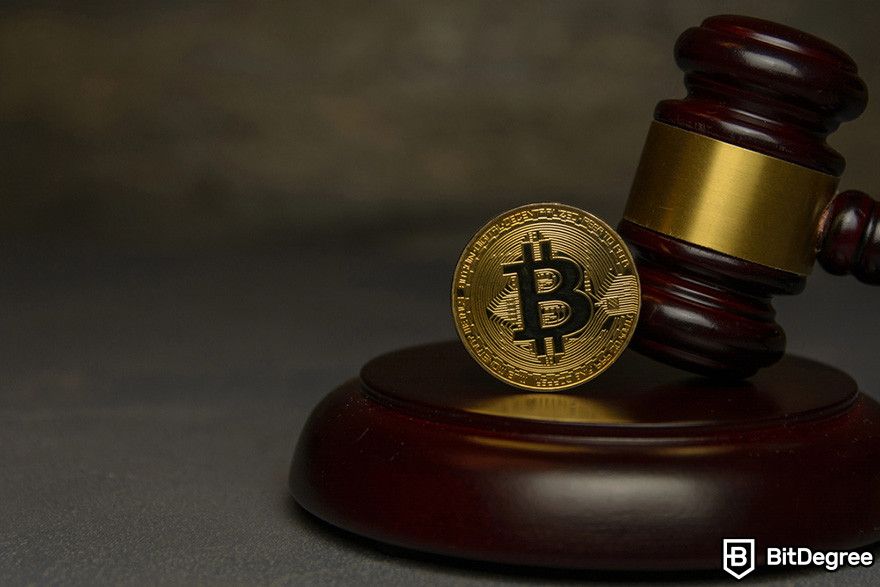
For example, consider the challenges banks face in monitoring and reporting suspicious transactions to regulatory bodies. Traditional systems often rely on manual processes and centralized databases, which can be prone to errors and delays. Blockchain in banking automates these processes through smart contracts and transparent transaction records, enabling banks to flag and report suspicious activities more efficiently.
Moreover, blockchain technology can streamline regulatory reporting requirements. By maintaining a comprehensive and immutable ledger of transactions, banks can generate accurate and detailed reports for regulatory authorities with minimal effort. This reduces the administrative burden on banks and ensures timely compliance with regulatory deadlines.
Furthermore, blockchain in banking facilitates secure and compliant data sharing between financial institutions and regulatory bodies. Since blockchain provides a single, immutable source of truth, regulators can access real-time data without compromising privacy or security. This enhances trust and collaboration between banks and regulators, fostering a more robust regulatory framework.
Real-Life Examples of Blockchain in Banking
After we’ve looked at the 10 main benefits of blockchain in banking, I think it would be better if we also pay attention to some of the real-life examples of blockchain-making waves in the banking sector. Here are the three main ones:
RippleNet
Ripple, a blockchain company, has partnered with numerous banks like Santander and Standard Chartered to leverage their RippleNet platform. This platform utilizes blockchain to facilitate faster, cheaper, and more transparent cross-border payments. Traditional methods often involve multiple intermediaries and can be slow and expensive. RippleNet streamlines the process by using a shared ledger that all participants can access, ensuring real-time visibility and faster settlements.

R3 Consortium
The R3 Consortium, a group of over 200 banks including Wells Fargo and HSBC, is exploring and developing blockchain applications specifically for trade finance. Their goal is to automate document verification, accelerate settlements, and reduce risks associated with trade finance transactions. Traditionally, trade finance involves a lot of paperwork and manual processes, which can be prone to errors and delays. Blockchain's secure and immutable ledger can automate document verification and streamline the flow of information between all parties involved, leading to faster transactions and reduced risks.


- Secure and reliable
- Accepts fiat currencies
- Lots of trading options
- Reputable exchange
- Accepts fiat currencies
- Offers various trading options

- Huge trading variety
- Regulation-compliant around the globe
- Fair trading fees
- Beginner-friendly
- A wide array of features
- Vast number of different crypto coins & tokens

- Beginner-friendly
- Secure
- Decent trading and withdrawal fees
- Crypto.com Visa Card
- Automated tools & bots
- Ecosystem synergy with CRO
JPMorgan Chase
JPMorgan Chase, a leading global financial institution, has developed its own blockchain platform, JPM Coin, to facilitate faster and more secure settlements of security trades. Traditionally, settling security trades can take days due to the need for intermediaries to verify and confirm transactions. JPM Coin uses blockchain technology to create a digital representation of US dollars, allowing for real-time settlements between participants on the platform. This significantly reduces settlement times and associated risks. These are just a few examples of how blockchain is transforming the banking industry. As the technology continues to develop, we can expect to see even more innovative applications emerge in the years to come.
Conclusions
Alright, that was a whirlwind tour of the exciting possibilities of blockchain in banking! As we've seen, this technology has the potential to revolutionize the way banks operate, offering a faster, cheaper, and more transparent experience for everyone. From streamlined cross-border payments to ironclad security measures, the benefits of using blockchain in banking are undeniable.
Of course, there are still challenges to overcome; scalability, regulation, and integrating legacy systems all need to be addressed. But with major players like Binance, Kraken, and Bybit already exploring the potential use of blockchain in banks and financial systems, the future looks bright.
Will blockchain completely overhaul the traditional banking system? Only time will tell. But one thing's for sure: blockchain technology in banking is here to stay, and it has the potential to significantly improve the way we manage our finances. So, keep an eye out. The future of banking might just be built on a blockchain.
The content published on this website is not aimed to give any kind of financial, investment, trading, or any other form of advice. BitDegree.org does not endorse or suggest you to buy, sell or hold any kind of cryptocurrency. Before making financial investment decisions, do consult your financial advisor.
Scientific References
1. Raj. A., Kumar A., Sharma V.: Enhancing Security Feature in Financial Transactions using Multichain Based Blockchain Technology;
2. Chen T.: Blockchain and Accounting Fraud Prevention: A Case Study on Luckin Coffee;
3. Regueiro C., Aguirre I. S., Gutierrez-Aguero I., et al: A Blockchain-Based Audit Trail Mechanism: Design and Implementation;
4. Zhen Z., Xie S., Dai H., et al: An Overview of Blockchain Technology: Architecture, Consensus, and Future Trends.
